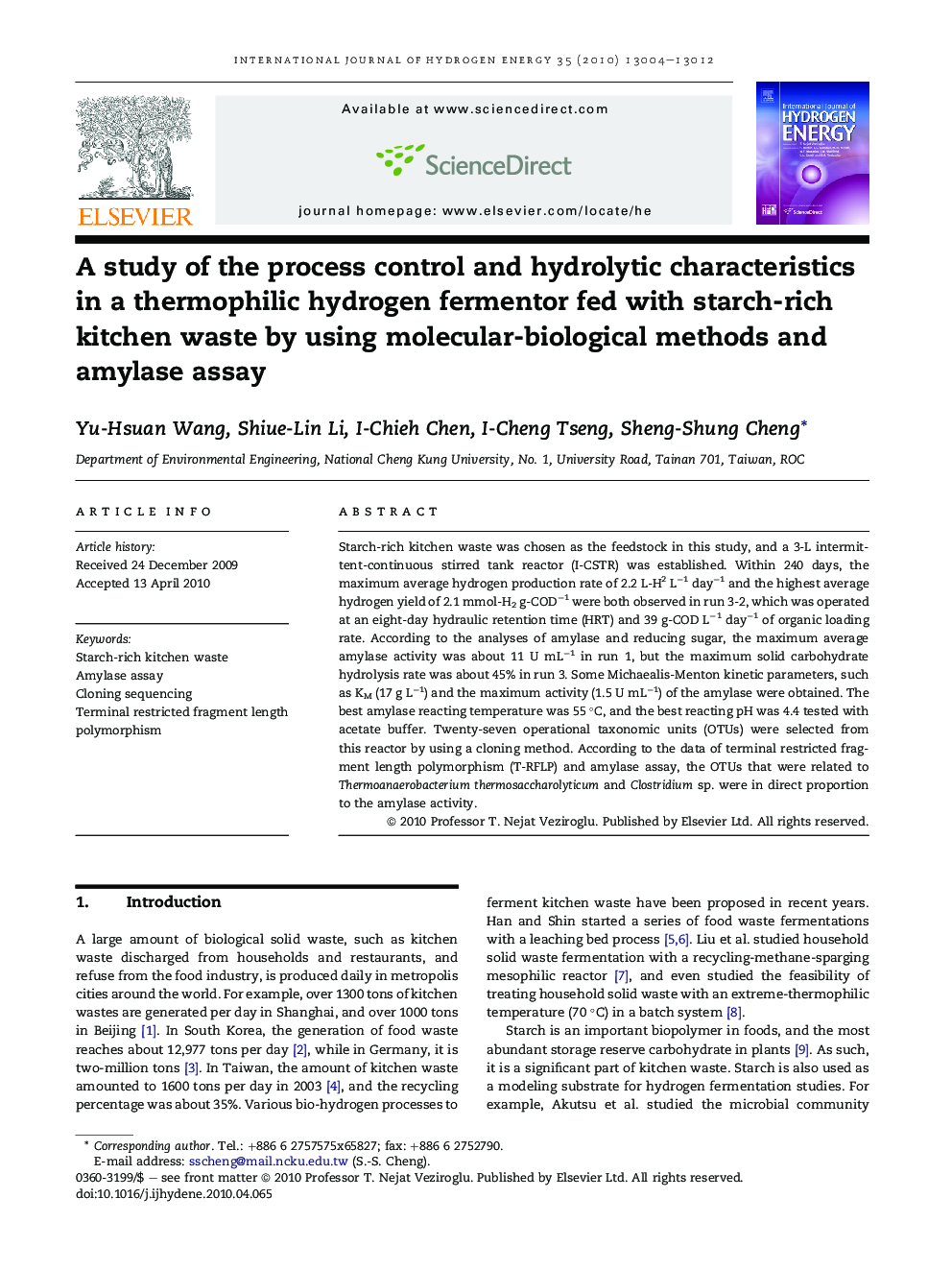| Article ID | Journal | Published Year | Pages | File Type |
|---|---|---|---|---|
| 1279948 | International Journal of Hydrogen Energy | 2010 | 9 Pages |
Starch-rich kitchen waste was chosen as the feedstock in this study, and a 3-L intermittent-continuous stirred tank reactor (I-CSTR) was established. Within 240 days, the maximum average hydrogen production rate of 2.2 L-H2 L−1 day−1 and the highest average hydrogen yield of 2.1 mmol-H2 g-COD−1 were both observed in run 3-2, which was operated at an eight-day hydraulic retention time (HRT) and 39 g-COD L−1 day−1 of organic loading rate. According to the analyses of amylase and reducing sugar, the maximum average amylase activity was about 11 U mL−1 in run 1, but the maximum solid carbohydrate hydrolysis rate was about 45% in run 3. Some Michaealis-Menton kinetic parameters, such as KM (17 g L−1) and the maximum activity (1.5 U mL−1) of the amylase were obtained. The best amylase reacting temperature was 55 °C, and the best reacting pH was 4.4 tested with acetate buffer. Twenty-seven operational taxonomic units (OTUs) were selected from this reactor by using a cloning method. According to the data of terminal restricted fragment length polymorphism (T-RFLP) and amylase assay, the OTUs that were related to Thermoanaerobacterium thermosaccharolyticum and Clostridium sp. were in direct proportion to the amylase activity.
